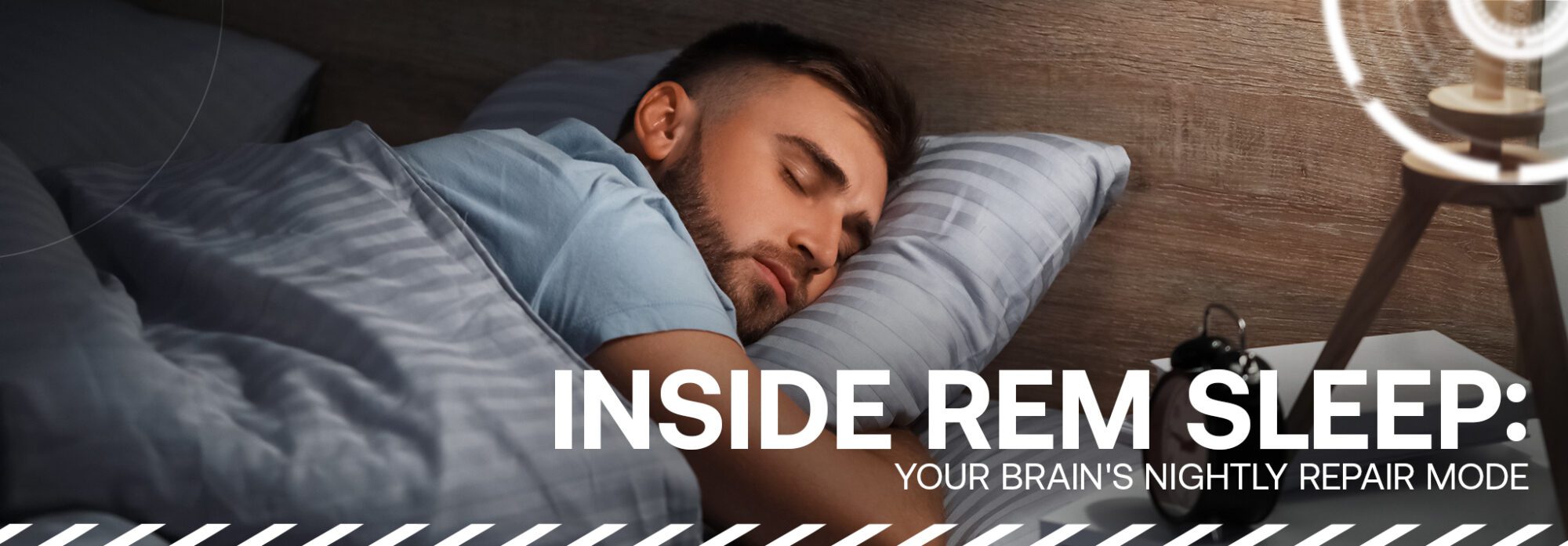
Inside REM Sleep: Your Brain’s Nightly Repair Mode
What is REM Sleep, and Why Does It Matter?
REM stands for Rapid Eye Movement, named for the darting motion of your eyes during this phase. But the real magic happens beneath the surface. During REM sleep, your brain activity resembles that of wakefulness, and your body temporarily paralyzes most muscles (aside from the occasional twitch).
This stage plays a vital role in processing emotions, consolidating memories, and even fostering creativity. It’s also the phase where your most vivid dreams occur. Adults typically spend 20–25% of their sleep in REM, but too little can impact mood, focus, and overall health.
How Can You Calculate REM Sleep?
Tracking REM sleep used to be something reserved for scientists, but now wearables bring this insight to your wrist. REM sleep typically happens during the latter part of the night, cycling every 90 minutes. So if you sleep for eight hours, you’ll likely experience four to six REM phases, with the longest occurring closer to morning.
To maximize REM, calculate your sleep cycles backward from your wake-up time. For example, if you need to wake up at 7 a.m., aim to fall asleep by 11 p.m. to complete five 90-minute cycles.
While manual calculations are helpful, wearable devices like Pison Perform take it to the next level by offering precise data about your sleep stages, including REM. These insights help you identify patterns and optimize your sleep schedule.
How to Improve REM Sleep
If your goal is better REM sleep (and trust me, it should be), here are some tried-and-true tips:
- Stick to a Sleep Schedule: Go to bed and wake up at the same time every day, even on weekends. Your body thrives on routine.
- Wind Down Wisely: Incorporate a calming pre-sleep ritual like reading or meditating. Avoid screens—the blue light interferes with melatonin production.
- Avoid Stimulants: Skip caffeine, nicotine, and alcohol before bed. While alcohol might help you fall asleep, it disrupts REM later in the night.
- Get Moving: Regular exercise promotes better sleep, but make sure to finish intense workouts at least a few hours before bedtime.
- Create a Sleep Haven: Your bedroom should be dark, cool, and quiet. Invest in blackout curtains or a white noise machine if needed.
How Wearables Like Pison Perform Help You Sleep Smarter
Here’s where wearable tech makes all the difference. Devices like Pison Perform, powered by innovative technology from Pison Technology, go beyond basic sleep tracking. They provide detailed breakdowns of your sleep cycles, including REM stages, offering actionable insights.
Unlike some wearables that simply spit out data, Pison Perform empowers you with information you can actually use to improve your sleep quality. Whether you’re chasing better REM sleep or just trying to feel more rested, these tools make it easier to achieve your goals.
The Bottom Line
Understanding and improving REM sleep is more accessible than ever. By combining healthy sleep habits with advanced wearable tech like Pison Perform, you can take charge of your sleep health—and unlock the benefits of better rest.


